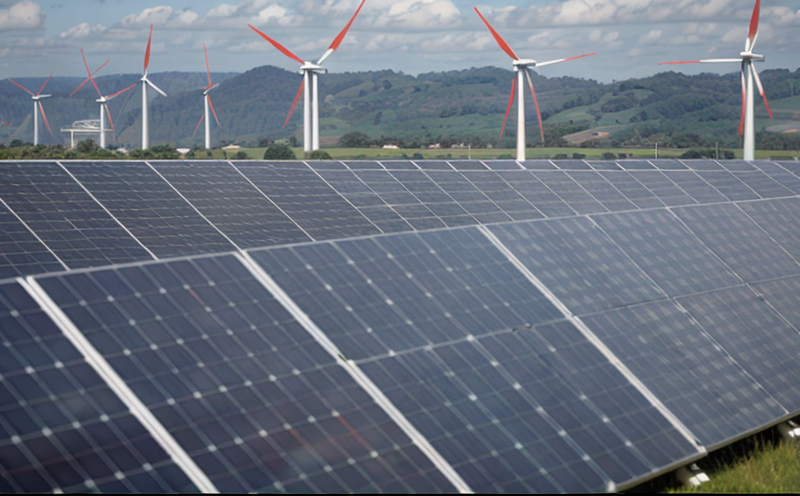Biomass Energy Density Measurement
The measurement of biomass energy density is crucial in assessing the potential and viability of renewable energy systems within the agriculture and forestry sectors. Biomass, which includes plant materials like wood waste, agricultural residues, and other organic matter, plays a pivotal role in sustainable energy production. Accurate determination of its energy content ensures efficient utilization, compliance with international standards, and optimal design of biomass-based power generation plants.
Energy density refers to the amount of energy stored per unit mass of biomass. For instance, wood has an estimated energy density ranging from 14 MJ/kg for softwoods to approximately 20 MJ/kg for hardwoods. The accurate measurement of this property is essential in calculating the potential energy output of a given biomass feedstock.
In the context of renewable energy systems, understanding the energy density helps in optimizing fuel storage and transportation logistics. This is particularly important for mobile or remote installations where weight and volume constraints are critical. Additionally, it supports the design and operation of biomass combustion plants, gasification processes, and anaerobic digestion facilities.
Standardization plays a key role in ensuring consistent results across different laboratories and regions. International standards such as ISO 17826:2014 provide guidelines for determining the gross calorific value (GCV) of biomass fuels by bomb calorimetry, which is one method used to measure energy density.
When selecting a laboratory for this service, it's important to consider expertise in handling diverse biomass types and compliance with relevant standards. The use of advanced instrumentation ensures precision and reliability, leading to accurate assessments that support informed decision-making in the renewable energy sector.
Scope and Methodology
| Parameter | Description |
|---|---|
| Biomass Type | Includes wood chips, sawdust, straw, and other agricultural residues. |
| Sample Preparation | Uniform particle size, moisture content controlled within ±2%. |
| Instrumentation | Bomb calorimeter for calorimetric measurement. |
| Data Analysis | Gross Calorific Value (GCV) determination and energy density calculation. |
The methodology employed involves rigorous sample preparation to ensure uniformity in particle size and moisture content, both of which significantly affect the accuracy of calorimetric measurements. The bomb calorimeter is used to determine the GCV by measuring the heat released when a known amount of biomass burns completely under controlled conditions.
This process yields valuable data on the energy content per unit mass, allowing for precise calculation of the energy density. Compliance with international standards ensures that results are comparable and reliable across different testing environments.
Industry Applications
- Biomass fuel supply chain optimization.
- Designing efficient biomass combustion plants.
- Optimizing anaerobic digestion processes for bioenergy production.
- Development of renewable energy policies and standards.
| Application | Description |
|---|---|
| Biomass Combustion Plant Design | Determining the optimal feedstock mix to maximize efficiency. |
| Anaerobic Digestion Optimization | Predicting methane production potential and optimizing operational parameters. |
| Supply Chain Management | Ensuring consistent fuel quality for efficient logistics planning. |
| Policy Development | Providing data for sustainable biomass utilization policies. |
The accurate measurement of biomass energy density is essential in various applications within the renewable energy sector. For instance, in designing biomass combustion plants, understanding the specific energy content allows engineers to optimize feedstock mixtures, ensuring maximum efficiency and minimizing waste.
In anaerobic digestion processes, precise knowledge of energy density helps predict methane production potential, which is crucial for optimizing operational parameters and maximizing biogas yield. Additionally, supply chain management benefits from consistent fuel quality data, enabling efficient logistics planning and reducing transportation costs.
The data provided by these measurements also supports the development of sustainable biomass utilization policies at both national and international levels. This ensures that energy production practices are environmentally friendly and economically viable.
Eurolab Advantages
At Eurolab, we offer unparalleled expertise in biomass energy density measurement services tailored to the agriculture and forestry sectors. Our team of experienced professionals brings a wealth of knowledge in handling diverse biomass types and adhering to international standards.
- Comprehensive Expertise: We cover all major biomass types, including wood chips, sawdust, straw, and agricultural residues.
- State-of-the-Art Equipment: Equipped with advanced bomb calorimeters for precise measurements.
- ISO Compliance: Ensured accuracy and reliability through adherence to international standards.
- Comprehensive Reporting: Detailed reports that include all test parameters, sample preparation details, and energy density calculations.
We pride ourselves on delivering accurate, reliable results that are essential for the successful implementation of renewable energy projects. Our commitment to excellence ensures that you receive the highest quality service, supporting your goals in sustainable biomass utilization.





